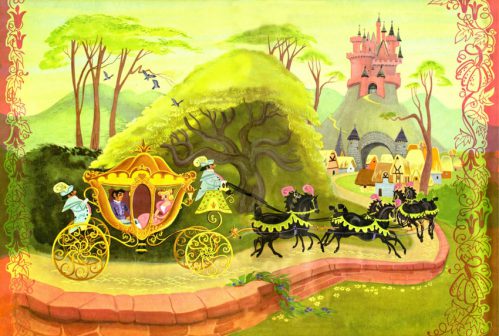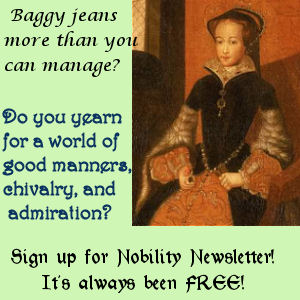by Plinio Corrêa de Oliveira
Stories, it is well known, provide children with their first contact with life. Through them, a child’s intelligence crosses the boundaries of the home environment to become acquainted with the basic concepts about human society, its countless vicissitudes, its attractions, the duties it imposes, the disillusionments it carries, and the interplay of human passions in the ups and downs of the great struggle of existence.
“The life of man upon earth is a warfare,” says the Holy Scripture (Job 7:1). “Warfare,” indeed. It is a struggle in which some fight for their personal interests, legitimate or illegitimate, while others fight the world, the flesh, and the devil for the greater glory of God. During the earliest years of life a child acquires his first notions about this warfare, his deepest impressions of its essential aspects and of the stand he must take.
It is thus of utmost importance that a Catholic civilization provide wholesome and profound religious literature for children. By this I mean not only the catechism and books on sacred history, which must be at the center of everything else, but also stories that serve as commentaries on and extensions and applications of what religion teaches.
This is what sound doctrine dictates regarding literature. But how evident it is that most of the literature for children today is a far cry from this. The typical reading material for children is completely secular, and bad on this account alone. There are distinctions to be made, however, for secularism long ago ceased being the only evil that plagues children’s literature.
In speaking of children’s literature, I evidently include the pertinent illustrations that it calls for as well as those that that are often used to excess. I will limit my comments here to an analysis of some illustrations, as this column is not meant for literary critique.
* * *
 Our first illustration is from Walt Disney, showing Cinderella riding with her prince toward their dream castle. It is an example of the marvelous in children’s literature.
Our first illustration is from Walt Disney, showing Cinderella riding with her prince toward their dream castle. It is an example of the marvelous in children’s literature.
Some reservations must be expressed about the picture. In principle, everything that is offered to children must be conducive to making them more mature lest it be at least partially unwholesome. This illustration has a certain simplicity that an adult might construe as a delightful, delicate rendition of a child’s imagination, but it does not help the child become more mature. Something about the coachman and the footman, about the structure of the mountain and the structure of the castle itself suggests that this illustration was not only made for children but by children. This is also noticeable, though less clearly, in other aspects of the scene.
This reservation having been expressed, how could one fail to praise the good taste, the delicacy, and the variety of the composition? The marvelousness – an indispensable element for developing an upright esthetic sense in children, for elevating their spirits, opening new perspectives for them, stimulating their imaginations in an orderly way – is represented in this illustration with remarkable taste and finesse.
* * *
 Let us now turn to a depiction of daily life, with its calm, homespun, and agreeable aspects. This is another essential trait of children’s literature for awakening in them an attraction for reality and virtue.
Let us now turn to a depiction of daily life, with its calm, homespun, and agreeable aspects. This is another essential trait of children’s literature for awakening in them an attraction for reality and virtue.
Shown is a classic drawing from Wilhelm Busch’s Max and Moritz. From the rooftop, the two rascals of the “seven mischievous deeds” are “fishing” for Mrs. Bollte’s chicken. The widow’s faithful little dog barks with lively concern beside the stove. Absorbed in her domestic chores in the basement, she does not notice anything. The “two ill-bred kids, those two little devils” who “drive everyone mad,” vividly play out the pranks of domestic life, which, by the way, are met in the book with exemplary severity: “Read this book, and you shall know the end of the two,” says a prefatory admonition.
Excepting their pranks – perhaps not even excepting them – everything calls to mind the happy, calm, and moderately plentiful life of the people. The picture expresses freshness of soul, temperance, largess, and a reasonable well-being in an average situation.
 Then comes the pernicious kind of literature. It is but one example among a thousand depictions of punches, shots, assaults, aggression, exaggerated excitement, sensational narratives, blood, and death, of “supermen” who fly, pass through walls, and handle lightning bolts. It is a sinister and ludicrous fabric of unrealistic episodes, of cruelty and sensationally coarse gimmicks. This is not the case of just one story, but of a whole genre of literature filling pages and pages of comic books that are eagerly devoured by children.
Then comes the pernicious kind of literature. It is but one example among a thousand depictions of punches, shots, assaults, aggression, exaggerated excitement, sensational narratives, blood, and death, of “supermen” who fly, pass through walls, and handle lightning bolts. It is a sinister and ludicrous fabric of unrealistic episodes, of cruelty and sensationally coarse gimmicks. This is not the case of just one story, but of a whole genre of literature filling pages and pages of comic books that are eagerly devoured by children.
What horizons do these comic books open for children? Those of crime. What pleasures? Those of nervous excitement, which in certain cases approaches delirium. What ideals? Those of brute force and adventurous life without purpose.
These do not form a man, much less a Christian. Rather, the typical product of this literature is the neo-barbarian of our days.
Ambience Customs & Civilization, No. 40 – April 1954. Also published in TFP, May-Jun. 1995.









